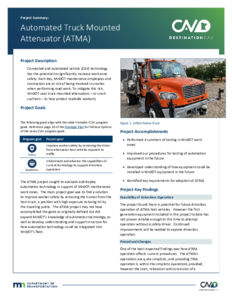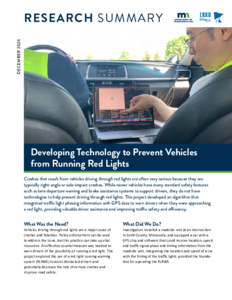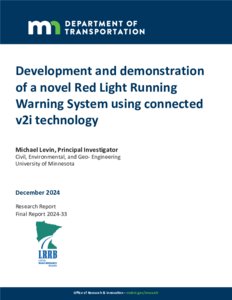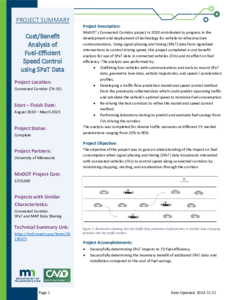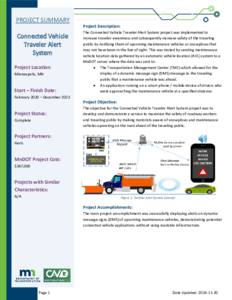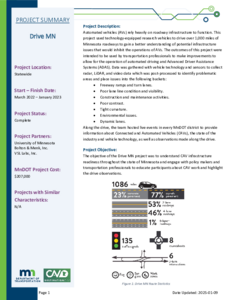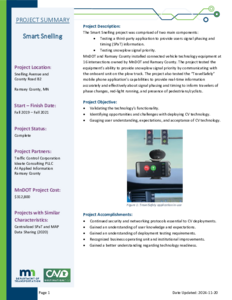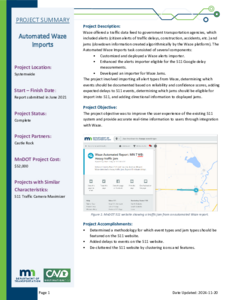Project Summary: Automated Truck Mounted Attenuator (ATMA)
Date Created
2025
Report Number
2025-26
Description
Project Summary: Community Driven CAV
Date Created
2025-02
Report Number
2025-20
Description
Development and demonstration of a novel Red Light Running Warning System using connected v2i technology
Date Created
2024-12
Report Number
2024-33
Description


